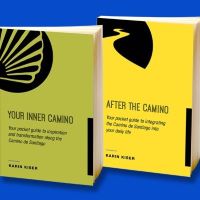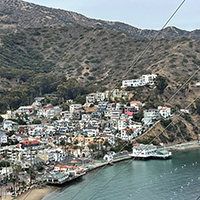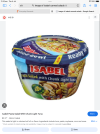You can get those individual portions too - like those jam packets in hotels. It's actually not a bad choice - you actually need the fat and sugar!
Remember we are long distance walking which is completely different to normal life. Figures often thrown around in the hiking world are 45-55% carbs (
some of which needs to be sugar); 35-40% fats; 10-15% protein to fuel a through hike. Whilst a camino is not quite as intense, on any camino
over two weeks long our needs are similar.
Many hikers carry a jar of peanut butter which seems crazy until you figure out the weight to fat & protein ratio which is way, way higher than just about anything else available. Protein and fat are key when walking long distance - most of the nut butters- peanut, almond, cashew, walnut, pecan, hazelnut etc are great. That said if you normally eat a lot of sugar or foods that are high in it (highly processed food, dried fruit are classic examples) you may also need sugar or you will 'crash'. A Sergeant I know often used to carry gummy bears, when one of his privates started getting grumpy he'd hand him a handful .... problem averted.
There's a heck of a lot more information online if you're interested. Gearskeptic has done a whole series on 'Performance nutrition for Backpackers' on YouTube for instance - fascinating stuff.
On Camino:
From home I carry a few packets of cupa soup and oatmeal, instant coffee and sugar. (Hate instant coffee but with a little sugar it's better than nothing). Plus 1x noodles (ramen) - you can always crunch on it as a snack, the flavouring packet makes a tasty cold soup.
On stages that might not have any supplies:
In addition to the bread, firm cheese, (salted)nuts, fruit, biscuits, tuna and noodles (ramen) that
@henrythedog carries, I carry dried fruit, Muesli or protein bars, and I normally have a Snickers bar or two, or some nut chocolate.
I also buy a small jar of tomato pesto, and some good crackers. Pesto can be used with the bread, the crackers, or the noodles. Ditto the cheese. I carry a teaspoon and a sharp knife (purchased from a supermarket), and sometimes one of those bamboo forks you frequently get with the salads. A microwavable container of some sort is useful, even if just a cup. I know a number of forum members also carry a coil to heat their own water - I don't (yet?).
If I use the supplies I obviously mix them out with whatever I can get at the time - sometimes simply for variety. For examples swapping couscous with noodles. The beauty of couscous is that you can cold soak it. I'll often swap the tuna for a chorizo/cabonossi. (The packaging is lighter too!). A few times I couldn't get coffee sachets but I could get hot chocolate. Not the same, but it's tasty!
Most of the Spanish supermarkets have the long life yogurt drinks. They don't need refrigeration and they are a good breakfast boost. You can sometimes get those dried pasta or rice meals.
Obviously a lot of these things come from my hiking days. I don't carry anywhere near as much food on camino as I would hiking but I would rather carry half a kilo more than risk going hungry. Basically, I carry enough food to cover myself for 24 hours.
If you look online (even dare I say it YouTube) you will find hundreds of ideas. Really it's just a matter of going into whatever supermarket you can find and looking to see what is light, halfway healthy, tasty and easy.




















